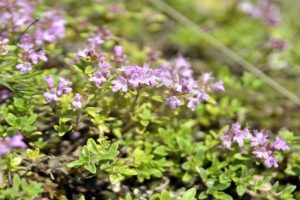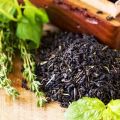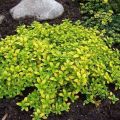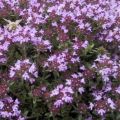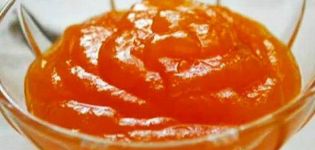Growing thyme (thyme) in the open field in the Moscow region
Thyme or thyme, which in Russia was called Bogorodskaya grass, takes root on stone slopes, grows in forest glades, meadows, and sands. In the wild, the shrub is found in all countries of Europe and Asia, in the north of the African continent. In the Moscow region, thyme is often planted as an ornamental plant.
The perennial stalks creeping along the ground form a green carpet, strewn with purple, pink or lilac inflorescences. Such beauty pleases summer residents all summer. Thyme buds appear as soon as the snow melts.
Features of growing thyme in the Moscow region
Among the three hundred varieties of fragrant shrubs in Russia, more than a hundred are found, but most often creeping or common thyme is planted. Summer residents and gardeners know where thyme grows best, which land they prefer. In the Moscow region, perennials are grown:
- in an open place;
- on the windowsill;
- in the container.
Grass seeds are added to fish and meat, used in salads and sauces. To provide a family with fragrant seasoning or herbs, you don't need a lot of space for thyme - a window sill on the south side is enough. To decorate the flower beds, thyme is planted in containers. In the open field, thyme grows on alpine hills, along paths.
In areas where there are slopes and ascents, creeping thyme descends beautifully, purple or pink inflorescences originally merge with the leaves. For the wintering of a perennial in the Moscow region, there is no need to cover the roots. Thyme does not tolerate dampness, does not like heavy soil, but it is resistant to frost.
How does this plant reproduce?
Thyme stalks take root quickly, every year it occupies an ever larger area of the site, drowning out flowers in flower beds, and summer residents sometimes have to fight with it. Thyme reproduces:

- independently;
- seeds;
- cuttings;
- dividing the bushes.
When the earth heats up to at least 15 degrees, peat and sand are poured into the container in the same proportion. The soil is watered and the seeds of thyme are placed into it to a depth of 5 cm, covered with soil, and covered with a film on top. The container is transferred to a warm place. After 2 weeks, shoots should appear. When the sprouts come out, the container is placed on the windowsill, where it is light. Seedlings need to be thinned and watered, and after 70 days sent to the garden. The distance between seedlings should be 2 cm, between rows - no more than 25.
For propagation by cuttings, strong shoots are chosen, the length of which is at least 10 cm. Before the thyme begins to bloom, the young stems are cut with shears and placed in wet sand, covered with a film.When roots are formed, which usually occurs after two weeks, the thyme is transplanted to a new location in the open ground.
To propagate the thyme from the ground, a bush is dug out, the part with the root is carefully separated from it, which is placed in the soil, covered with a film or jar. The transplant should be done in early spring or in October. The plant takes root better if the stalk is treated with the growth stimulator Kornevin, and the roots are not shaken off from the soil.
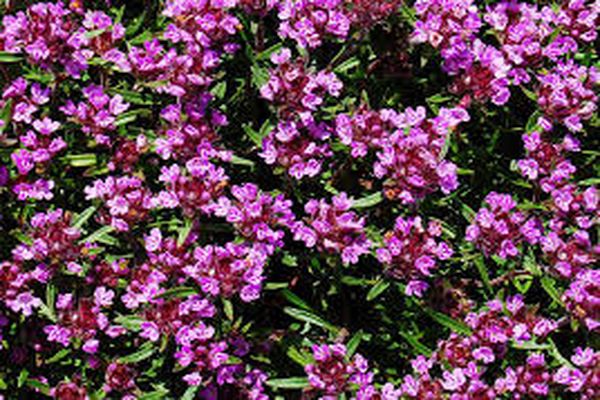
How to choose a landing site?
Although thyme is classified as an unpretentious crop, in order for it to please with bright inflorescences, certain conditions must be observed. The shrub should be planted in the area where the sun's rays fall all day. In the shade, the shoots stretch out, few buds appear, the decorative qualities of the culture deteriorate.
When growing thyme in a house or apartment, a place for it is allocated on the south window.
Choice of soil for thyme
The semi-shrub does not take root well on heavy lands where water stagnates, does not like acidic soil, adores sandy soil. In the wild, it is found even in rocky areas, but does not grow in wetlands. Such features of thyme need to be known to summer residents who first decided plant thyme in open ground.
The culture normally tolerates a prolonged lack of watering, but with stagnant moisture, the roots rot. To prevent this from happening, after planting the bush in dense ground, sand is poured on top with a thin layer.
Grass care
Thyme will delight you with a lush carpet and aroma, if the necessary conditions for its growth are provided. When growing thyme in a garden or at a summer cottage, the main focus is on:
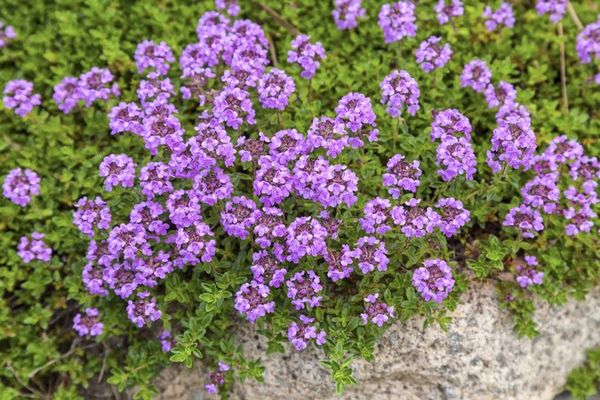
- preparing the ground;
- moisture;
- weeding;
- pest control.
In autumn, the soil is dug to a depth of at least 20 cm, weeds are pulled out from the root. Sand is added to heavy soil or mixed with peat. The addition of ash helps to reduce acidity. They feed the land with organic matter. Manure is suitable for this purpose, compost is suitable.
Landing
In the spring, the site chosen for the thyme is dug up again. Sow thyme into the soil when it warms up to 13 degrees. The dense sprouts that appear are thinned out, leaving about 30 cm between them. When growing thyme in the open field, seedlings are first prepared. For this, the seeds are placed in a container or tray in which the soil is constantly moistened. Cover the container with glass. At the age of a month, the box with seedlings is taken out in the air, and after 2 weeks the hardened seedlings are sent to a permanent place.
Watering
Thyme is not afraid of drought; it is necessary to moisten the soil only with prolonged heat. So that the water does not quickly evaporate, straw, compost, river sand or expanded clay are poured around the bush. Thanks to mulching, the thyme is not oppressed by weeds; moisture remains in the ground longer. In case of heat and drought, watering is necessary once a week, sometimes two, after which the soil must be loosened.
To give the thyme a beautiful shape, the stems are shortened in spring, and then the young shoots form a lush green cap. Old branches are cut with pruners in the fall.
Top dressing
If organic matter was introduced into the soil before planting, in the spring, before the emergence of seedlings, the thyme is fertilized with urea and ash. For the next year, the shrubs are fed with organic matter during pruning. Plants react negatively to fresh manure.
Diseases and pests
With proper care, adherence to agricultural technology, thyme does not suffer from insect infestations. They don't like the smell of the essential oils in the plant. The semi-shrub is resistant to diseases, but sometimes the stems and leaves serve as food for pests in the form of:
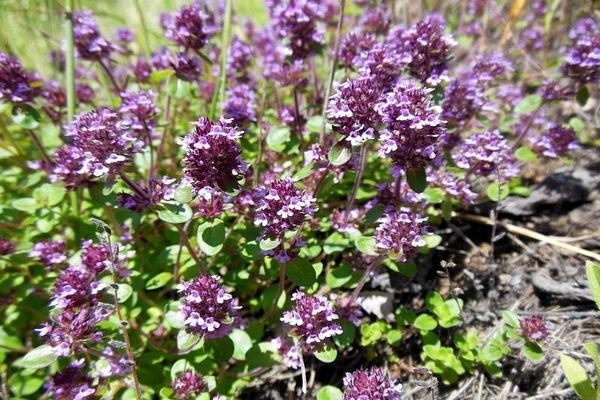
- weevil;
- aphids;
- meadow moths.
You can fight insects using traps, however, you can often cope with them only by spraying the bushes with insecticide solutions.
With stagnant moisture, which happens when the soil is heavy, it rains constantly, thyme is affected by fungal diseases.Loosening of the soil, adding sand to it, helps to prevent their development.
Collection and storage
Thyme in the Moscow region is often grown to decorate alpine hills, flower beds. Dry shoots of the plant are used for making tea, decoctions. So that the smell does not disappear, you need to follow the rules when collecting and storing thyme.
Leaves and stems are harvested when the shrub is covered with flowers. Young shoots are cut and consumed fresh.
To prevent the thyme from rotting, it is not washed with water before drying; it is spread evenly on paper. Timely collection and storage are the main conditions, the observance of which guarantees the aroma of both leaves and flowers.
Landscape designers use thyme for arranging flower beds and slides, appreciate it for its high decorative qualities. The owners of summer cottages and suburban areas plant thyme not only to decorate the work, but also to obtain spices and medicines... With timely collection and storage in compliance with the basic rules, neither leaves, nor stems, nor flowers, lose their beneficial properties.

